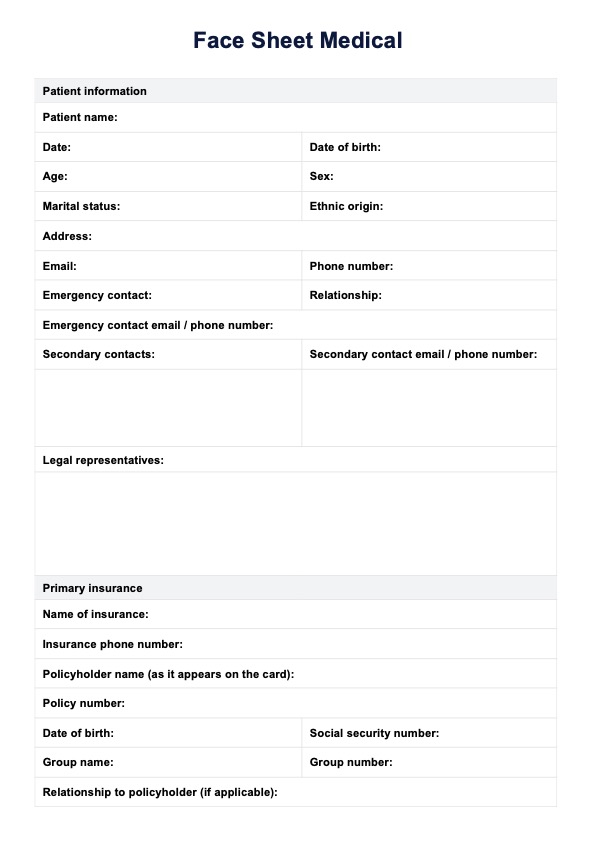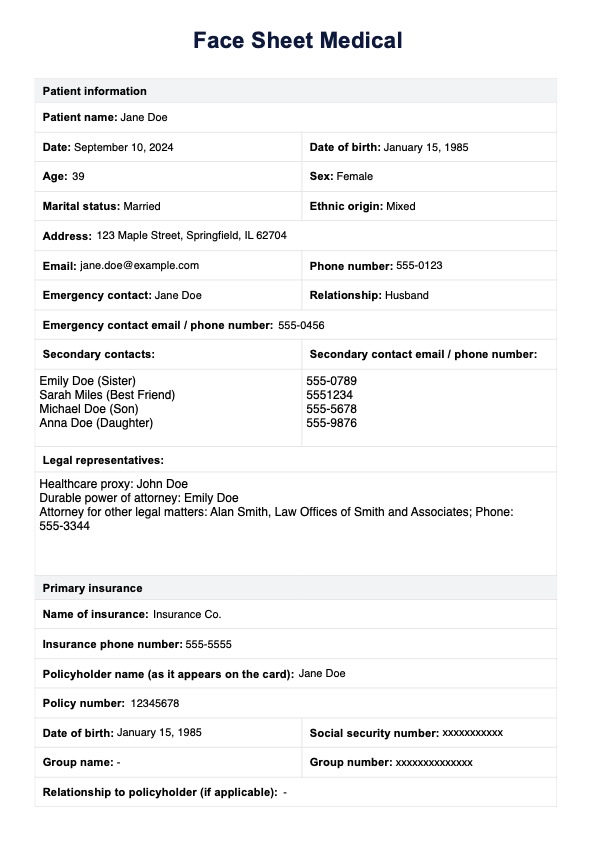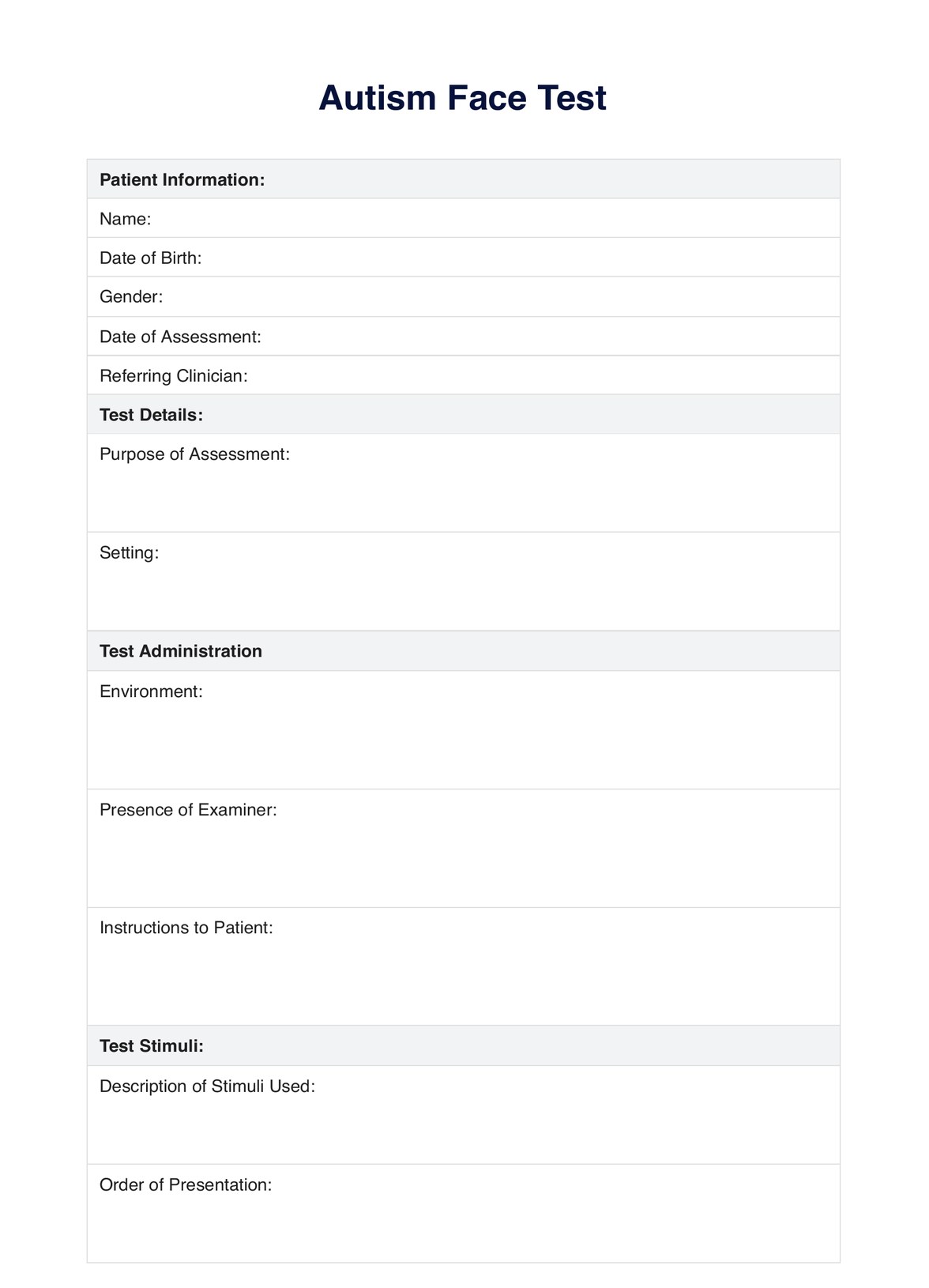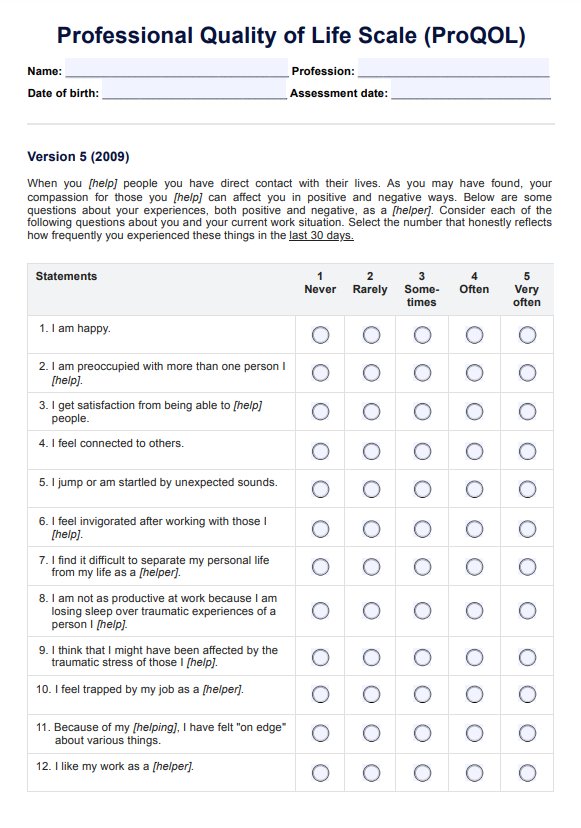Face Sheet (Medical)
Explore the benefits of using a medical face sheet for efficient patient care, including quick patient data access and insurance verification.


What is a medical face sheet?
A medical face sheet is a document in a patient's medical chart or electronic health record. It summarizes important details and this document often includes patient identification, brief medical history, medications, allergies, and insurance information. In certain cases, the document may also include information on the patient's level of functioning. This document is crucial for healthcare providers to get a comprehensive overview of a patient's information and health status at a glance, facilitating quick and informed decision-making, especially in critical situations.
This document is often used by healthcare professionals across various settings, including hospitals, primary care offices, specialty clinics, nursing homes, and emergency departments. Some professionals who use these sheets are doctors, nurses, specialists, emergency medical services (EMS), administrative staff, and pharmacists.
Face Sheet (Medical) Template
Face Sheet (Medical) Example
What information does a Face Sheet (Medical) have?
Medical face sheets are designed to gather comprehensive patient information to ensure a holistic view of their health status and preferences. This information aids healthcare providers in delivering personalized and effective care.
Emergency contact information
Emergency contact information is essential for healthcare providers in case of an emergency or when critical decisions need to be made. This section includes the primary contact, secondary contacts, and legal representatives and all of their contact information.
Patient's medical history
The section on a patient's current and past medical history is critical for understanding their health background. It typically includes information for family health history, current/past medical conditions, including allergies, past surgeries and hospitalizations, medications, and vaccinations.
Patient preferences
Understanding patient preferences is crucial for tailoring healthcare to meet their individual needs and expectations. This section can include details on treatment, communication, care, privacy, dietary, and others.
How does our Face Sheet (Medical) template work?
The free medical face sheet serves as a crucial tool in the healthcare setting, providing a comprehensive overview of a patient's key information at a glance. To ensure the medical sheet template is used effectively, it's important to follow a systematic approach to compiling and updating this information. Below are detailed steps to accurately fill out and utilize the medical face sheet template to facilitate optimal patient care.
Step 1: Collect patient information
Prioritize patient identification and fill in the patient information section with the patient's full name, date of birth, age, sex, ethnic origin, marital status, contact information, emergency contact details, secondary contacts, and legal representatives and their contact information. This information is crucial for identification purposes and in case of an emergency.
Step 2: Collect insurance information
Complete the sections for primary and secondary insurance that include information on the insurer's name, contact details, policyholder's name, date of birth, policy number, social security number, group name and number, and relationship to the policyholder, if applicable.
Step 3: Compile the medical history
Complete the medical history section by listing the family medical history, current medical conditions, allergies, past medical conditions, past surgeries and hospitalizations, past and current medications, and vaccinations. It's best to be as detailed as possible when completing this. For example, when recording the medications, include the name, dosage, frequency, and purpose of each medication.
Step 4: Note patient preferences
Afterward, the patient's preferences regarding treatment, communication, care privacy, diet, and others should be noted. Recording this will be crucial to delivering quality care, especially for in-patients.
Step 5: Complete the rest of the form
As a final step, complete the rest of the form by adding any additional relevant information that will help the patient and other healthcare providers who need patient details. In addition, note down your name and contact information in case other healthcare providers need a reference on who the last one who updated the patient records was.
Benefits of using Face Sheet (Medical) templates
Medical face sheets are a staple document often used by healthcare facilities and professionals. Using a template of the face sheet medical document, in particular, poses many benefits, such as the following:
- Easy access to patient information: A completed Face Sheet (Medical) template provides a comprehensive overview of essential patient information needed to assess the patient's health status.
- Improved decision-making: Having all critical information on hand allows you to make informed decisions more efficiently, especially during emergency situations.
- Streamlined processes and enhanced coordination: Filled-out medical face sheets not only help administrative staff verify patient information and process insurance claims, but they also help healthcare providers and teams better communicate with each other.
Commonly asked questions
The primary purpose of a medical face sheet is to provide healthcare professionals with a concise summary of a patient's critical information, including medical history, current medications, and allergies, to facilitate quick and informed decision-making.
Medical face sheets are typically updated by healthcare providers, such as nurses or doctors, who add new information or modify existing details based on the latest clinical assessments and patient interactions.
Yes, patients have the right to access and review their medical face sheet, usually through patient portals provided by healthcare institutions. This ensures transparency and enables them to verify or correct their personal and medical information.











































































































